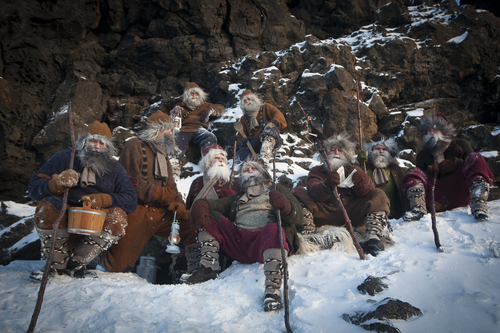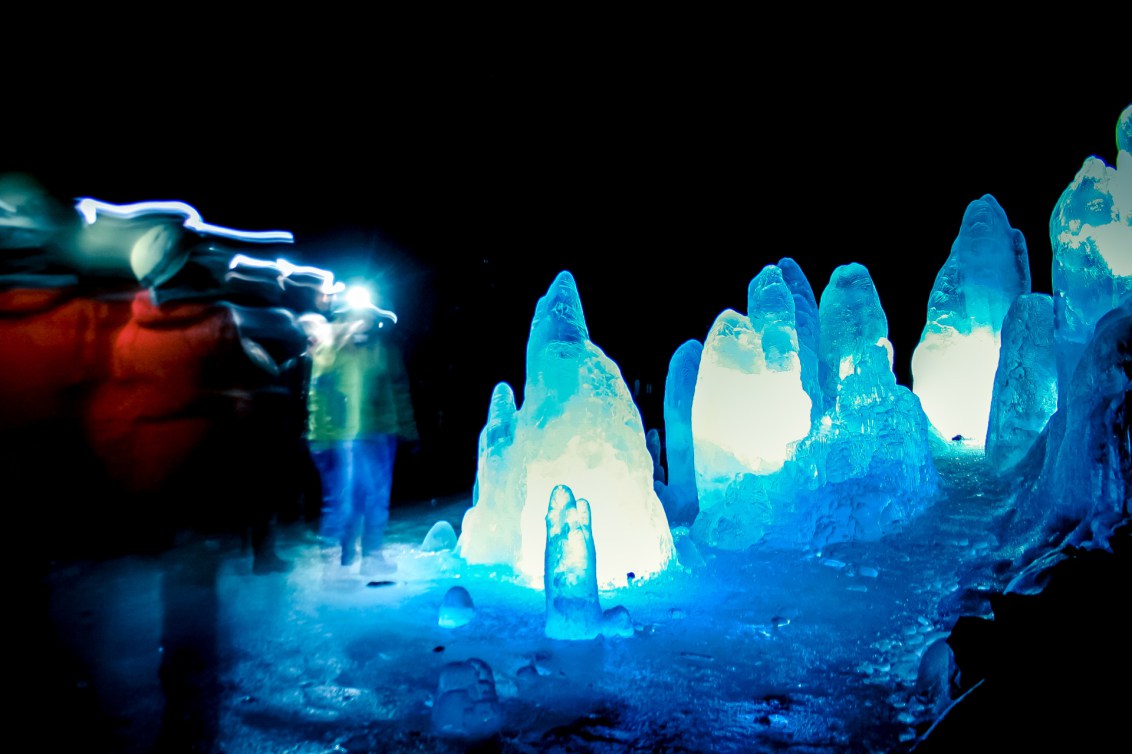Seasons
When is the best time to see the northern lights? Guaranteed darkness is the first important factor. The best season to see the northern lights in Iceland is from September to mid-April – these are the months where there are full dark nights. Some sources will recommend November to February, as they are the darkest months with the longest possible window to see the lights, however these sources often fail to take into account that these months can have the worst weather with lots of rain and snow. It is also not unheard of to see the lights as early as mid-August, once the final traces of the midnight sun summer are gone.
The Mývatn (Myvatn) Lake and its entire surroundings are world-famous for their beauty. In addition, Myvatn Lake District is considered one of the best birding and bird watching locations in Iceland.
Mývatn (Myvatn) Lake is a unique pearl of nature, the fourth largest lake in Iceland, covering around 36.5 km2 (around 14 sq. mi). It is situated at 277 m (908 ft.) above sea level, averaging a depth of only 2.5 m. Myvatn Lake has more than 50 small islands and islets, mostly formed volcanically when molten lava flowed into the lake.
Mývatn (mý – midge; vatn – lake) derives its name from these small insects which provide a large part of the diet for various birds as well as trout. Myvatn Lake and the surrounding wetlands have a remarkably rich fauna of bird life, and are home to more species of ducks than any other place on earth. The densest habitation of Harlequin Duck in the world is at the upper reaches of Laxá (Laxa), Salmon River, and the Barrow’s Goldeneye duck is found in no other place in Europe. Other bird species include the Red-breasted Merganser, Wigeon, Gadwall, Mallard, European Teal, Long-tailed duck and Eiders.
The golf course at Mývatn (Krossdalsvöllur) is a really fun but challenging one. There are 9 holes and it has a par value of 33. This unique golf course offers the most beautiful view and landscapes of Mývatn and its surroundings. If you love golf and nature, this one is not to miss!
Learn more at www.golf.is/gkm
In winter during the dark nights the ground is covered with snow. This is the time you can experience the Northern Lights, Aurora Borealis. Keeping silent, watching and even hearing the lights dancing through the sky, it´s a magnificent experience. During the day time you can go cross country skiing, snowmobiling or hiking through steaming grounds.
What a great way to spend the day!
Lake Mývatn is a paradise for birdwatchers. Everywhere you stop there are birds around you, particularly on the lake itself. When at lake Mývatn, always be on the lookout for Gyr Falcons as they are often found hunting near the lake. One good stop is at Hotel Reykjahlíð. Stop at the parking area near the hotel and search the lake from there or walk a bit closer to the lake for better views. Drive anti-clockwise around the lake until you reach another superbly rich area at the bay of Neslandavík. There are often large flocks of Tufted Duck, Greater Scaup and Eurasian Wigeon in the bay. This area is also particularly good for Common Scoter. A thorough scan of these flocks is likely to yield scarce vagrants such as American Wigeon, Common Pochard and Ring-necked Duck. Sigurgeir’s Bird Museum is located at the farm Ytri Neslönd by the bay. The museum is conveniently located in one of the best birdwatching locations by the lake.
Go birdwatching around the lake and visit Sigurgeir's Bird Museum for an interesting showcase and great information on icelandic birds and their habits. Visit www.fuglasafn.is for more information.

The Yule Lads live in Iceland, way up north in Mývatn at Dimmuborgir - Dark Fortress, and there you can find their cave hidden away - and you might even stumble upon it during your visit to Dimmuborgir.
Dimmuborgir - the Dark Fortress at Mývatn is a true wonder of nature. This amazing area consists of towering lava rock formations which make you feel like you stepped into another world - a world of fairy-tales and Yule Lads :)
The formation of these extraordinary lava cliffs and pillars is caused by lava ponds, i.e. hot lava streamed over these ponds trapping the water underneath the lava. Steam issued through vent in the lava pools and formed these pillars, which then remained standing even after the crust around them had gone away. The rocks are brittle and fragile - and here is the playground of the Yule Lads - so be alert while visiting this area as you might run into them!
Our original Yule Lads were pranksters and all of them have their special name, which describes their mischievous conduct. Their names are:
Stekkjastaur- Sheep Cote Clod
Giljagaur - Gully Gawk
Stúfur - Stubby
Þvörusleikir - Spoon Licker
Pottaskefill - Pot Scraper
Askasleikir - Bowl Licker
Hurðaskellir - Door Slammer (he loves waking people up by slamming doors)
Skyrgámur - Skyr Gobbler
Bjúgnakrækir - Sausage Swiper
Gluggagægir - Window Peeper
Gáttaþefur - Doorway Sniffer
Ketkrókur - Meat Hook
Kertasníkir - Candle Beggar
The mystical world of darkness and ice in the Lofthellir Cave, a natural lava cave that boasts the greatest natural ice sculptures currently known in Iceland. You access through a drive along a rugged track to the unique volcano Hverfell, through the crater row of Lúdentarborgir to the roots of Mt. Hvannfell. After a 30 min walk across a lava field which is adorned by endless lava, you reach the Lofthellir Lava Cave. At least one hour is spent inside the cave, observing this unbelievable natural phenomenon. Book now!


